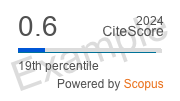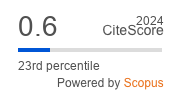A review of current approaches to pacing in children with atrioventricular blocks
https://doi.org/10.29001/2073-8552-2020-35-3-14-31
Abstract
Pacing is currently the main method of treatment in children with life-threatening bradyarrhythmias. The high-grade atrioventricular block remains the main indication for permanent pacing in children. The factors that determine the specificity of device implantation in the pediatric population are as follows: anthropometric data of a child and their compliance with the size of a pacemaker and the electrodes, the need for long-term (lifelong) cardiac stimulation and multiple replacements of a pacemaker, high level of child’s activity, changes in the physical parameters of the body over time (the need for implantation of the leads “with reserve” and their replacement), and, in some cases, the presence of concomitant congenital heart defects, especially, with intracardiac shunts. One of the controversial issues in pediatric cardiac stimulation is choosing a method of implantation (epicardial or endocardial). According to recent reports, the epicardial lead implantation techniques are increasingly being used because the transvenous pacemakers are associated with more serious complications and due to the capability to choose hemodynamically optimal stimulation zone in epicardial technique to prevent pacemaker-induced dyssynchrony. This approach allows to ultimately postpone the implantation of the endocardial stimulation system, administration of which is associated with the problem of endovascular lead extraction in children, the problem, which has not been resolved not only in Russia but also worldwide. This review article discusses recent literature on the use of permanent pacing in children, including the advantages and disadvantages of using the endocardial and epicardial pacemaker systems as well as various methods of implantation and pacemaker modes most often used in pediatric practice.
About the Authors
B. N. DambaevRussian Federation
Bair N. Dambaev, Resident Physician, Department of Pediatric Cardiology
111a, Kievskaya str., Tomsk, 634012, Russian Federation
O. Yu. Dzhaffarova
Russian Federation
Olga Yu. Dzhaffarova, Cand. Sci. (Med.), Senior Research Fellow, Department of Pediatric Cardiology
111a, Kievskaya str., Tomsk, 634012, Russian Federation
L. I. Svintsova
Russian Federation
Liliya I. Svintsova, Dr. Sci. (Med.), Leading Research Fellow, Department of Pediatric Cardiology
111a, Kievskaya str., Tomsk, 634012, Russian Federation
I. V. Plotnikova
Russian Federation
Irina V. Plotnikova, Dr. Sci. (Med.), Head of the Department of Pediatric Cardiology
111a, Kievskaya str., Tomsk, 634012, Russian Federation
A. V. Smorgon
Russian Federation
Andrey V. Smorgon, Junior Research Fellow, Department of Functional and Laboratory Diagnostic 111a, Kievskaya str., Tomsk, 634012, Russian Federation
S. N. Krivolapov
Russian Federation
Sergey N. Krivolapov, Interventional Cardiologist, Department of Interventional Arrhythmology
111a, Kievskaya str., Tomsk, 634012, Russian Federation
A. M. Gulyaev
Russian Federation
Avenir M. Gulyaev, Cand. Sci. (Med.), Radiologist, Department of Radiology and Tomography
111a, Kievskaya str., Tomsk, 634012, Russian Federation
References
1. Aquilina O. A brief history of cardiac pacing. Images Paediatr. Cardiol. 2006;8(2):17–81.
2. Udink ten Cate F.E.A., Sreeram N. Pacing therapy in infants and children with congenital and acquired complete atrioventricular block: Optimal pacing strategies, management, and follow-up. In book: Modern Pacemakers – Present and Future; ed. M.R. Das. Rijeka, Croatia; Shanghai, China: InTech; 2011:89–116. DOI: 10.5772/10521.
3. Welisch E., Cherlet E., Crespo-Martinez E., Hansky B. A single institution experience with pacemaker implantation in a pediatric population over 25 years. Pacing Clin. Electrophysiol. 2010;33(9):1112–1118. DOI: 10.1111/j.1540-8159.2010.02781.x.
4. Revishvili A.Sh., Bojtsov S.A., Davtjan K.V., Zenin S.A., Kuznetsov V.A., Kuptsov V.V. et al. Clinical guidelines for electrophysiological studies, catheter ablation and use of implantable antiarrhythmic devices; 3rd. ed. Moscow: MAKS Press; 2017:704 (In Russ.).
5. Egorov D.F., Gordeev O.L. Diagnostics and treatment of patients with implanted antiarrhythmic devices. St.-Petersburg: Chelovek; 2005:256 (In Russ.).
6. McLeod K.A. Cardiac pacing in infants and children. Heart. 2010;96(18):1502–1508. DOI: 10.1136/hrt.2009.173328.
7. Toogood G. Pacemaker therapies in cardiology. Australian Family Physician. 2007;36(7):518–524.
8. Lotfy W., Hegazy R., AbdElAziz O., Sobhy R., Hasanein H., Shaltout F. Permanent cardiac pacing in pediatric patients. Pediatr. Cardiol. 2013;34(2):273–280. DOI: 10.1007/s00246-012-0433-2.
9. Simonenko V.B., Steklov V.I. Electrical stimulation of the heart: history, current trends and prospects. Clinical Medicine. 2012;(12):4–10 (In Russ.).
10. Tomaske M., Gerritse B., Kretzers L., Pretre R., Dodge-Khatami A., Rahn M. et al. A 12-year experience of bipolar steroid-eluting epicardial pacing leads in children. Ann. Thorac. Surg. 2008;85(5):1704–1711. DOI: 10.1016/j.athoracsur.2008.02.016.
11. Boveda S., Bartoletti S. Do patients need to adapt to technology improvements? Europace. 2019;21(11):1605–1606. DOI: 10.1093/europace/euz252.
12. Kancharla K., Deshmukh A.J., Friedman P.A. Leadless pacemakers – implant, explant and long-term safety and efficacy data. J. Atr. Fibrillation. 2017;10(2):1581. DOI: 10.4022/jafib.1581.
13. Kovalev I.A., Belozerov Yu.M., Sadykova D.I., Sabirova D.R., Yakovleva L.V., Khabibrakhmanova Z.R. et al. Atrioventricular block in children. Pediatric Pharmacology. 2018;15(5):365–375. DOI: 10.15690/pf.v15i5.1959 (In Russ.).
14. Brugada J., Blom N., Saquella-Brugada G., Blomstorm-Lundqvist C., Deanfield J., Janousek J. et al. Pharmacological and non-pharmacological therapy for arrhythmias in the pediatric population: EHRA and AEPC-Arrhythmia Working Group joint consensus statement. Europace. 2013;15(9):1337–1382. DOI: 10.1093/europace/eut082.
15. Kovalev I.A., Baranov A.A. Atrioventricular block in children. Clinical guidelines. Moscow; 2016 (In Russ.).
16. Bar-Cohen Y., Berul C.I., Alexander M.E., Fortescue E.B., Walsh E.P., Triedman J.K. et al. Age, size, and lead factors alone do not predict venous obstruction in children and young adults with transvenous lead systems. J. Cardiovasc. Electrophysiol. 2006;17(7):754–759. DOI: 10.1111/j.1540-8167.2006.00489.x.
17. Cecchin F., Atallah J., Walsh E.P., Triedman J.K., Alexander M.E., Berul Ch. Lead extraction in pediatric and congenital heart disease patients. Circ. Arrhythm. Electrophysiol. 2010;3(5):437–444. DOI: 10.1161/CIRCEP.110.957324.
18. Janoušek J., van Geldorp I.E., Krupičková S., Rosenthal E., Nugent K., Tomaske M. et al. Permanent cardiac pacing in children: choosing the optimal pacing site: a multicenter study. Circ. 2013;127(5):613–623. DOI: 10.1161/CIRCULATIONAHA.112.115428.
19. McCanta A.C., Schaffer M.S., Collins K.K. Pediatric and Adult Congenital Endocardial Lead Extraction or Abandonment Decision (PACELEAD) survey of lead management. Pacing Clin. Electrophysiol. 2011;34(12):1621–1627. DOI: 10.1111/j.1540-8159.2011.03226.x.
20. Bracke F., Meijer A., van Gelder B. Venous occlusion of the access vein in patients referred for lead extraction: influence of patient and lead characteristics. Pacing Clin. Electrophysiol. 2003;26(8):1649–1652. DOI: 10.1046/j.1460-9592.2003.t01-1-00247.x.
21. Figa F.H., McCrindle B.W., Bigras J.L., Hamilton R.M., Gow R.M. Risk factors for venous obstruction in children with transvenous pacing leads. Pacing Clin. Electrophysiol. 1997;20(8-1):1902–1909. DOI: 10.1111/j.1540-8159.1997.tb03594.x.
22. Kammeraad J., Rosenthal E., Bostock J., Rogers J., Sreeram N. Endocardial pacemaker implantation in infants weighing < 10 kg. Pacing Clin. Electrophysiol. 2004;27(11):1466–1474. DOI: 10.1111/j.15408159.2004.00663.x.
23. Klug D., Vaksmann G., Jarwe M., Wallet F., Francart Ch., Kacet S. et al. Pacemaker lead infection in young patients. Pacing Clin. Electrophysiol. 2003;26(7-1):1489–1493. DOI: 10.1046/j.1460-9592.2003.t011-00215.x.
24. Carreras E.M., Duncan W.J., Djurdjev O., Campbell A.I.M. Cardiac strangulation following epicardial pacemaker implantation: a rare pediatric complication. J. Thorac. Cardiovasc. Surg. 2015;149(2):522–527. DOI: 10.1016/j.jtcvs.2014.10.094.
25. Takeuchi D., Tomizawa Y. Cardiac strangulation from epicardial pacemaker leads: Diagnosis, treatment, and prevention. Gen. Thorac. Cardiovasc. Surg. 2015;63(1):22–29. DOI: 10.1007/s11748-014-0483-x.
26. Beaufort-Krol G.C., Mulder H., Nagelkerke D., Waterbolk T.W., BinkBoelkens M.Th.E. Comparison of longevity, pacing, and sensing characteristics of steroid-eluting epicardial versus conventional endocardial pacing leads in children. J. Thorac. Cardiovasc. Surg. 1999;117(3):523– 528. DOI: 10.1016/s0022-5223(99)70332-6.
27. Taylor S.J., Zeigler V.L. Permanent pacemakers. Practice Management of Pediatric Cardiac Arrhythmias. 2001;7:305–358.
28. Cutler N.G., Karpawich P.P., Cavitt D., Hakimi M., Walters H.L. Steroid-eluting epicardial pacing electrodes: six year experience of pacing thresholds in a growing pediatric population. Pacing Clin. Electrophysiol. 1997;20(12):2943–2948. DOI: 10.1111/j.1540-8159.1997.tb05464.x.
29. Johns J.A., Fish F.A., Burger J.D., Hammon J.W. Steroid-eluting epicardial pacing leads in pediatric patients: encouraging early results. J. Am. Coll. Cardiol. 1992;20(2):395–401. DOI: 10.1016/0735-1097(92)90108-Y.
30. Udink ten Cate F.E.A., Breur J.M., Boramanand N., Crosson J., Friedman A., Brenner J. et al. Endocardial and epicardial steroid lead pacing in the neonatal and paediatric age group. Heart. 2002;88(4):392–396. DOI: 10.1136/heart.88.4.392.
31. Mond H.G., Stokes K.B. The electrode-tissue interface: the revolutionary role of steroid elution. Pacing Clin. Electrophysiol. 1992;15(1):95–107. DOI: 10.1111/j.1540-8159.1992.tb02905.x.
32. Dodge-Khatamia A., Kadnera A., Dave H., Rahn M., Prêtre R., Bauersfeld U. Left heart atrial and ventricular epicardial pacing through a left lateral thoracotomy in children: a safe approach with excellent functional and cosmetic results. Eur. J. Cardio-Thor. Surg. 2005;28(4):541–545. DOI: 10.1016/j.ejcts.2005.06.040.
33. Mills R.W., Cornelussen R.N., Mulligan L.J., Strik M., Rademakers L.M., Skadsberg N.D. et al. Left ventricular septal and left ventricular apical pacing chronically maintain cardiac contractile coordination, pump function and efficiency. Circ. Arrhythm. Electrophysiol. 2009;2(5):571–579. DOI: 10.1161/CIRCEP.109.882910.
34. Timoshok V.L., Zasim E.V., Belik O.N., Drozdovskaya V.V., Sobanina A.D., Dedovich V.V. et al. Permanent epicardial pacing of right ventricle in children: influence upon left ventricle function. Nauchnye Stremleniya. 2016;20:95–96 (In Russ.).
35. Zareba W., Klein H., Cygankiewicz I., Hall W.J., McNitt S., Brown M. et al. Effectiveness of cardiac resynchronization therapy by QRS Morphology in the Multicenter Automatic Defibrillator Implantation Trial – Cardiac Resynchronization Therapy (MADIT–CRT). Circulation. 2011;123(10):1061– 1072. DOI: 10.1161/CIRCULATIONAHA.110.960898.
36. Kovanda J., Lozek M., Ono S., Kubuš P., Tomek V., Janoušek J. Left ventricular apical pacing in children: feasibility and long-term effect on ventricular function. Europace. 2020;22:306–313. DOI: 10.1093/europace/euz325.
37. Matsuhisa H., Oshima Y., Maruo A., Hasegawa T., Tanaka A., Noda R. et al. Pacing therapy in children – repeat left ventricular pacing for preservation of ventricular function. Circ. J. 2014;78(12):2972–2978. DOI: 10.1253/circj.CJ-14-0534.
38. Auricchio A. Pacing the left ventricle: does underlying rhythm matter? J. Am. Coll. Cardiol. 2004;43(2):239–240. DOI: 10.1016/j.jacc.2003.10.028.
39. Etienne Y., Mansourati J., Gilard M., Valls-Bertault V., Boschat J., Benditt D.G. et al. Evaluation of left ventricular based pacing in patients with congestive heart failure and atrial fibrillation. Am. J. Cardiol. 1999;83(7):1138–1140. DOI: 10.1016/s0002-9149(99)00031-4.
40. Van Geldorp I.E., Vanagt W.Y., Prinzen F.W., Delhaas T. Chronic ventricular pacing in children: toward prevention of pacing-induced heart disease. Heart Fail. Rev. 2011;16(3): 305–314. DOI: 10.1007/s10741010-9207-1.
41. Hou X., Qian Z., Wang Y., Qiu Y., Chen X., Jiang H. et al. Feasibility and cardiac synchrony of permanent left bundle branch pacing through the interventricular septum. Europace. 2019;21(11):1694–1702. DOI: 10.1093/europace/euz188.
42. Breur J.M., Udink ten Cate F.E.A., Kapusta L., Boramanand N., Cohen M.I., Crosson J.E. et al. Potential additional indicators for pacemaker requirement in isolated congenital atrioventricular block. Pediatr. Cardiol. 2006;27:564–568. DOI: 10.1007/s00246-004-0629-1.
43. Chamberlain D.A., Leinbach R.C., Vassaux C.E., Kastor J.A., DeSanctis R.W., Sanders C.A. Sequential atrioventricular pacing in heart block complicating acute myocardial infarction. N. Engl. J. Med. 1970;282:577– 582. DOI: 10.1056/NEJM197003122821101.
44. Hartzler G.O., Maloney J.D., Curtis J.J., Barnhorst D.A. Hemodynamic benefits of atrioventricular sequential pacing after cardiac surgery. Am. J. Cardiol. 1977;40(2):232–236. DOI: 10.1016/0002-9149(77)90013-3.
45. Horenstein M.S., Karpawich P.P. Pacemaker syndrome in the young: Do children need dual chamber pacing as the initial pacing mode? Pacing Clin. Electrophysiol. 2004;27(5):600–605. DOI: 10.1111/j.15408159.2004.00493.x.
46. Horenstein M.S., Karpawich P.P., Victoria M., Tantengco T. Single versus dual chamber pacing in the young: Noninvasive comparative eveluation of cardiac function. Pacing Clin. Electrophysiol. 2003;26(5):1208–1211. DOI: 10.1046/j.1460-9592.2003.t01-1-00170.x.
Review
For citations:
Dambaev B.N., Dzhaffarova O.Yu., Svintsova L.I., Plotnikova I.V., Smorgon A.V., Krivolapov S.N., Gulyaev A.M. A review of current approaches to pacing in children with atrioventricular blocks. Siberian Journal of Clinical and Experimental Medicine. 2020;35(3):14-31. (In Russ.) https://doi.org/10.29001/2073-8552-2020-35-3-14-31





.png)





























